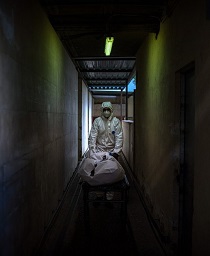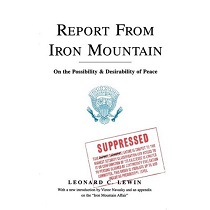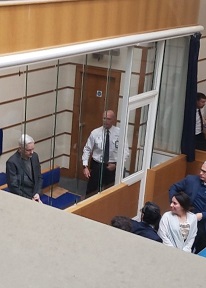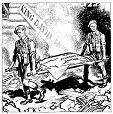Torture in US Prisons
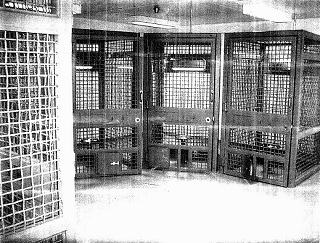
Four Custom Therapeutic [sic] Modules delivered to State
prison at Walpole (Massachusetts Correctional Institution-
Cedar Junction, formerly known as MCI-Walpole)
In March 2005, a UK Deborah Davis Channel 4 report titled, "Torture, Inc., America's Brutal Prisons" highlighted the horrors, including prisoners savaged by dogs, brutally shocked with cattle prods, burned by toxic chemicals, harmed by stun guns, beaten, stripped naked and abused in various other ways. Sound familiar? Welcome to mainland Guantanamo.
"It's terrible to watch some of the videos," witnessing torture, at times resulting in death. Routinely, guards yell at and abuse prisoners, "ordering them to lie on the ground and crawl." If they don't "drop to the ground fast enough, a guard kicks him or stomps on his back." Another man screams when a dog bit his lower leg.
One other has a broken ankle, can't crawl fast enough so gets jabbed with a stun gun on his buttocks. Hours later his whole body still shakes. Men line up across the cellblock, guards standing over them shouting, prodding, kicking, and beating, their humiliation captured on video. The images are horrifyingly brutal, reminders of Guantanamo and Baghdad's Abu Ghraib. They're as commonplace in America, but unreported except by Channel 4 UK, calling it "wholesale torture taking place inside the US prison system," uncovered by a four-month investigation, not based on rumor or suspicion. Throughout America, videos and other solid evidence confirm it, what US major media reports won't reveal.
In most states, prison regulations mandate that guards videotape "use of force operations" like cell searches, in theory to show proper procedures were used. Most often, they reveal otherwise, clear evidence of inmate abuses - "a shocking insight into the reality of life inside" US prisons. Even the best of them are harsh, the worst hellish, Davis explaining that videos are "terrible" to watch, saying:
"you're not only seeing torture in action but, in the most extreme cases, you are witnessing young men dying. In one horrible scene, a naked man, passive and vacant, is seen being led out of his cell by prison guards. They strap him into a medieval-looking device called a 'restraint chair.' His hands and feet are shackled. There's a strap across his chest. His head rolls forward. He looks dead. He's not. Not yet."
He's being punished for having a pillowcase on his head in his cell and refusing to remove it. Why? He has a long history of schizophrenia, yet he's restrained for 16 hours. Two hours later, "he dies from a blood clot resulting from his barbaric treatment....We found 20 (other cases of) prisoners who've died in the past few years" after being brutally restrained, what American media won't report.
Two deaths were in Phoenix, AR county jail, run by "America's Toughest Sheriff," Joe Arpaio. "You don't want to be fettered in one of Sheriff Joe's jails." His toughness often ends tragically.
In one tape, nine deputies manhandle Charles Agster, a tiny man, a mentally disturbed drug user, arrested for disturbing the peace. Restrained in a chair, one deputy kneeled on his stomach, "pushing his head forward on to his knees and pulling his arms back to strap his wrists to the chair. Bending someone double for any length of time" can cause "positional asphyxia."
After 15 minutes, he's unconscious. He's already brain dead. Hospitalized, he expired three days later.
Another tape showed guards severely beating a man, Scott Norberg, including Tasering him 19 times and forcing him into a restraint chair. He suffocated.
Other inmates suffered similar abuse, including beatings causing broken bones, a broken neck, and internal injuries. One man died from septicaemia (blood poisoning) after a month in a coma.
In some tapes, sounds are as "unbearable" as images, a Florida prison one showing an inmate lying on a hospital examination table, guards ordering him to get into a wheelchair. "I can't, I can't," he shouts. "It hurts," after which he's Tasered on both hips, screams, but still can't get into the wheelchair.
Guards force him into it, bend his legs painfully, the man shrieking in agony. His lawyer said he's mentally impaired, has a back injury, can't walk, or bend his legs without intense pain. Yet guards try to make him stand and hold a walker. "He falls on the floor, crying in agony." He's Tasered again, lying there out of breath and energy, just moaning.
Other tapes show prisoners handcuffed, brutally beaten, kicked in the head, Tasered, while other guards "just stand around and watch." Photographs collected were also horrific, showing prisoners doused with pepper spray, "then left to cook in the burning fog of chemicals." one image revealed a man with "a huge patch of raw skin over his hip." Another is covered in an angry rash across his neck, back and arms. A third has deep burns on his buttocks.
"Fire extinguisher" sized pepper spray canisters are used, at times inflicting second degree burns all over prisoners' bodies. For those targeted, "The tell-tale sign is they turn off the ventilation fans in the unit," and shove cardboard in door cracks to make units air-tight.
One man on death row for killing a prison guard was brutally beaten to death. He began writing to Florida newspapers about prison brutality and corruption.
"So a gang of guards stormed into his cell to shut him up. They broke almost every one of his ribs, punctured his lung, smashed his spleen and left him to die."
Several guards later tried for murder were acquitted. The warden was promoted to head of all Florida prisons. The few guards willing to discuss what goes on have a "siege mentality. They see themselves outnumbered, surrounded by dangerous, violent criminals, so they back each other up, no matter what....it solidifies into a general climate of acceptance among the many." Even decent staff do their best under hard circumstances. Ratting means getting themselves in trouble, maybe abused or fired.
As for inmates, "the notion of rehabilitation has been almost lost. The focus is entirely on punishment," the harsher the better based on examples like the above. They're not the exception. They're more the rule in federal, state and local prisons.
Davis said contact was maintained with families and prisoner rights groups. As a result, "Every single day come more emails full of fresh horror stories," showing inmate treatment domestically like at Guantanamo and other torture prisons, guards brutalizing them with impunity.
"Abu Ghraib, Guantanamo - or even Texas. The prisoners and all guards may vary, but the abuse is still too familiar," one of many of America's dirty secrets.
America's Gulag - The World's Largest Prison Population
On December 8, 2009, US Justice Department Bureau of Justice Statistics reported over 2.4 million imprisoned Americans at yearend 2008. They include inmates in federal and state facilities, local jails, Indian, juvenile, and military ones, US territories, and numbers held by the Immigration and Customs Enforcement (ICE).
In addition, another 7.3 million are under correctional supervision, and 13 million pass through US prisons and jails annually. Half are for non-violent offenses. Half of those are drug-related. In 1980, 40,000 drug offenders were imprisoned. Today, it's over 500,000 because of the "war on drugs," that's part of the war on civil liberties.
Since 1970, America's prison population grew eightfold, not for more crime, for getting "tough" on it against more people getting longer sentences under extremely harsh conditions. Recent Center for Economic Policy Research figures compare America's incarceration rate per 100,000 population with other OECD countries in 2008/2009, showing the following:
● Iceland 44
● Japan 63
● Denmark 66
● Finland 67
● Norway 70
● Sweden 74
● Switzerland 76
● Ireland 85
● Germany 90
● Italy 92
● Belgium 94
● France 96
● South Korea 97
● Austria 98
● Netherland 100
● Portugal 104
● Greece 109
● Canada 116
● Australia 134
● Slovakia 151
● Hungary 152
● England and Wales 153
● Luxembourg 155
● Turkey 161
● Spain 162
● New Zealand 197
● Czech Republic 206
● Mexico 209
● Poland 224
● America 753 - the highest percentage in the world, higher than Russia at 629, and a total prison population four times China's with its fourfold higher population.
Worse still, America's incarceration rate from 1880 through 1980 held steady for over 100 years. It then skyrocketed over the past 30 while crime rates stabilized or fell - a shocking indictment of a criminally unjust system, filling beds for the prison-industrial complex, around 8% in prisons-for-profit, the population comprised of two-thirds Blacks and Latinos.
They're victimized by get tough on crime policies, racist drug laws, mandatory minimums, one size fits all, three strikes and you're out, a guilty unless proved innocent mentality, being in America undocumented, and Muslims for their faith, ethnicity, prominence, or charity to the wrong recipients, those unjustly called terrorists.
Sexual Abuse and Treatment of Women
About 200,000 women are incarcerated in US federal, state, local and immigrant detention prisons, nearly 10% of America's prison population. In its Fact Sheet - Sexual Assault and Misconduct Against Women in Prison, Amnesty International (AI) explained that:
"The imbalance of power between inmates and guards involves the use of direct physical force and indirect force based on the prisoner's total dependency on officers for basic necessities and the guards' ability to withhold privileges. Some women are coerced into sex for favors such as extra food or personal hygiene products, or to avoid punishment."
Daily they're affected by:
Powerlessness and Humiliation:
rds and other prison officials abuse women by rape, other sexual assault, sexual extortion, and random body searches. They also watch them undress, take showers or use toilets. Women who complain face brutal recrimination.Retaliation and Fear:
Guards use inmates' personal history files, including prior complaints, to enforce silence by threatening visitation rights, other privileges and at times punishment.
Impunity:
Abuses go unpunished by ignoring them, guilty guards and officials transferred to other facilities, or inmates relocated instead.
Blame the Victim:
Like men, women are victimized by the war on drugs, especially those of color.
Medical Neglect:
Women are denied essential resources and treatment, especially reproductive care when pregnant, or for treatable diseases. Also for chronic and degenerative ones, exacerbating them as a result. The common attitude is they're prisoners. Who cares!
In addition, few qualified staff means long delays and inferior treatment, compounded by overall indifference. Other problems include facilities charging inmates, shackling during treatment, not addressing substance abuse, and inadequate mental health services. Prisoners have no rights whatever, staff given impunity to abuse them freely.
Discrimination Based on Race:
Black women are eight or more times likely than Caucasians to be imprisoned, their numbers comprising about half the female population, mostly for drug-related or other nonviolent offenses.
Latina women experience four times the incarceration rate as whites. State and federal laws mandate minimum sentences for all drug "offenders," eliminating judicial discretion to excuse first-timers or refer others to counseling or other non-punitive programs.
Further, crack cocaine is the only illegal substance mandating prison for first time possession, disproportionately affecting Blacks, their common drug of choice.
Simple first-time powder cocaine possession is a misdemeanor, punishable at most up to one year in prison. For crack, however, it's five years, Blacks accounting for 84% of convictions in 2000, Hispanics 9% and Whites 6%.
Discrimination Based on Sexual Orientation:
Juror perceptions are especially biased against gay, lesbian or transgender defendants, compounded during imprisonment when guards and officials act more abusively against a perceived lifestyle they reject.
All inmates are powerless, women most of all, making them especially vulnerable to abuse, including rape and other forms of sexual assault, despite federal and state laws criminalizing forced or nonconsensual acts. Yet they repeatedly happen, many unreported for fear of recrimination or inability to provide proof. Other times out of shame or expectation that charges will be scoffed at.
In addition, women at times reporting them are isolated, ostensibly for safety, but the effect takes a physical and emotional toll. According to Deborah Golden, staff attorney for the DC Prisoners' Project of the Washington Lawyer' Committee for Civil Rights and Urban Affairs, many women don't view sex as an abuse. Most experienced sexual and other physical mistreatment before prison, reports Sarah From, Women's Prison Association public policy director.
In 2004, AI reported nearly 2,300 sexual abuse cases against men and women, the true totals far higher according to experts believing the problem is systemic and growing.
According to a 2007 Bureau of Justice Statistics report titled, "Sexual Victimization in State and Federal Prisons Reported by (male and female) Inmates," 4.5% of prisoners (108,000) reported being abused in the past year - also grossly understated because most incidents aren't reported. In addition, they're equally common against men and women, Human Right Watch saying at least 140,000 males are raped during incarceration.
In her 2006 paper titled, "Sexual abuse of women in United States prisons: a modern corollary of slavery," Brenda Smith compared the similarities, explaining that custody is the common thread even though, unlike slaves, prisoners ostensibly have rights under Eighth Amendment protections against cruel and unusual punishment, the Thirteenth Amendment outlawing slavery and involuntary servitude, and US law.
Abuse, however, remains unchecked, Angela Davis calling prison rape "an institutionalized component of punishment behind prison walls," men, women, and children victimized. Further, they're almost never provided mental health services to handle trauma, nor are guards given proper training or mandates to prevent sex crimes in the first place. This issue was addressed by the 2003 Prison Rape Elimination Act (PREA), the first federal law regarding sexual assault on prisoners, aiming to curb it through a "zero-tolerance" policy, as well as research and information gathering.
It calls for developing national standards to prevent, detect, reduce and punish sexual assault, making data on them more available to administrators, and holding officials and guards more accountable for their actions. But laws without enforcement are hollow, prisoner rights historically America's lowest priority. Those incarcerated are society's most abused and mistreated, especially vulnerable women out of sight behind bars.
Male Rape in Prison
Against women or men, rape inflicts pain and suffering. As a result, human rights and humanitarian groups as well as international courts now recognize it as torture. Most US states define it as forced, nonconsensual sex. California's law mirrors others saying:
It's sexual intercourse carried out "against a person's will by means of force, violence, duress, menace, or fear of immediate and unlawful bodily injury on the person or another." It's also when "the perpetrator threatens to use public authority to imprison, arrest, (otherwise punish), or deport the victim or another, and the victim reasonably believes the perpetrator is a public official."
This article focuses on torture against men and women, inflicted by prison guards and officials. Male rape is generally inmate-on-inmate. As a result, the topic is covered briefly, very much deserving detailed discussion in a separate article.
In April 2001, Human Rights Watch (HRW) published a report titled, "No Escape: Male Rape in US Prisons," citing studies showing about one in five men raped at least once during confinement. Documenting it with dozens of first-and accounts, HRW explained its long-lasting effects, including depression, PTSD, and HIV-AIDS, one victim saying:
"I remained in shock and paralyzed in thought for two days until I was able to muster the courage to report it. This is the most dreadful and horrifying experience of my life."
According to HRW, "Rape is not an inevitable consequence of prison life, but it certainly is a predictable one if little is done to prevent it and punish it." Indifference to prisoner rights perpetuates it against vulnerable men, women and children.
Prolonged Isolated Confinement
A previous article addressed it, accessed through THIS link.
In Supermax and other prisons, inmates compare long-term isolation to being buried alive. It also contributes to anti-social behavior and mental illness, experts saying punitive sensory deprivation changes behavior for the worst by crushing the human spirit, mind and body. Yet 80,000 or more Americans languish in isolation in US federal, state and local prisons. Over time, living in windowless cells with no human contact for 23 hours a day causes:
● severe anxiety;
● panic attacks;
● lethargy;
● insomnia;
● nightmares;
● dizziness;
● irrational anger, at times uncontrollable;
● confusion;
● social withdrawal;
● memory loss;
● delusions and hallucinations;
● mutilations;
● profound despair and hopelessness;
● suicidal thoughts;
● paranoia; and
● for many, a totally dysfunctional state and inability ever to live normally outside of confinement.
A Final Comment
An earlier article discussed "Torture As Official US Policy," accessed through THIS link.
It addressed post-9/11 Bush administration policies in prisons like Guantanamo and others abroad, explaining the systemic use of prohibited interrogation practices, excluding only those causing organ failure.
Legalized restraints remain ignored, permitting cruel and unusual punishment. Yet it routinely occurs domestically, out of sight and mind behind bars, many nonviolent and innocent inmates brutalized and forever affected.
The Sentencing Project.org says America's criminal justice system "fall(s) short of meeting its international human rights obligations," in accordance with established international law. Systemic prison torture is the clearest example.
___________________________________________________________________________________

Stephen Lendman: I was born in 1934 in Boston, MA. Raised in a modest middle class family, attended public schools, received a BA from Harvard University in 1956 and an MBA from the Wharton School at the University of PA in 1960 following 2 years of obligatory military service in the US Army. Spent the next 6 years as a marketing research analyst for several large US corporations before becoming part of a new small family business in 1967, remaining there until retiring at the end of 1999. Have since devoted my time and efforts to the progressive causes and organizations I support, all involved in working for a more humane and just world for all people everywhere, but especially for the most needy, disadvantaged and oppressed. My efforts since summer 2005 have included writing on a broad range of vital topics ranging from war and peace; social, economic and political equity for all; and justice for all the oppressed peoples of the world like the long-suffering people of Haiti and the Palestinians. Also co-hosting The Global Research News Hour, occasional public talks, and frequent appearances on radio and at times television.
Stephen Lendman is a Research Associate of the Centre for Research on Globalization. He lives in Chicago and can be reached at lendmanstephen@sbcglobal.net. Also visit his blog site sjlendman.blogspot.com and listen to The Lendman News Hour on RepublicBroadcasting.org Monday - Friday at 10AM US Central time for cutting-edge discussions with distinguished guests on world and national issues. All programs are archived for easy listening.
___________________________________________________________________________________
Photo: http://www.assatashakur.org/forum/prison-police-industrial-complex/40455-state-prison-plans-mental-therapy-torture.html
URL: http://www.a-w-i-p.com/index.php/2010/11/14/torture-in-us-prisons

